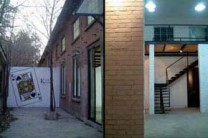Beauty of Composition in Chinese Calligraphy I
2011-04-15 11:31:21

From the point of view of composition, Chinese characters fall into two categories: single and compound character.
A single character has only one method of composition, while a compound character can be two components (on the left and right, or above and below each other), three components (on the left, middle and right, or top, middle and bottom) or encircled characters (full or semi-circled).
To satisfy the requirements of the beauty of form, there are mainly five requirements, as follows:
Straight and even. While writing, it is necessary to pay attention to the balance of the lines of the character; otherwise, it will look ugly. Traditionally, calligraphers have stressed the evenness of the character’s makeup, the proper length of its vertical and horizontal strokes and the suitability of darkness and lightness. This matches the esthetic requirement that beautiful people should have regular feature, and that rooms and courtyards are only beautiful when everything is in good order; they are unpleasant to look at if everything is in disorder. To hang a picture on the wall, the picture should be pleasant to look at and with suitable spaces on its left and right and above and beneath. Even a stamp should be pasted straight and even in order to give a good impression to the receiver of the letter.
Well-balanced. Characters or strokes should be well balanced. For the characters with few strokes, the strokes should be thicker, and strokes should coordinate with each other. For characters with more strokes, the strokes should be thinner, closer and well balanced.
Among various kinds of scripts, the seal script some the first in fine balance. At the same time, this script tries to minimize the blank spaces between strokes of a character. Other scripts come in this order according to their demands for balance: official script, formal script and running script. The cursive script and the wild cursive script pay no attention to balance, as they seek only vividness and rhythm.

 黄琦
黄琦 测试用艺术
测试用艺术
